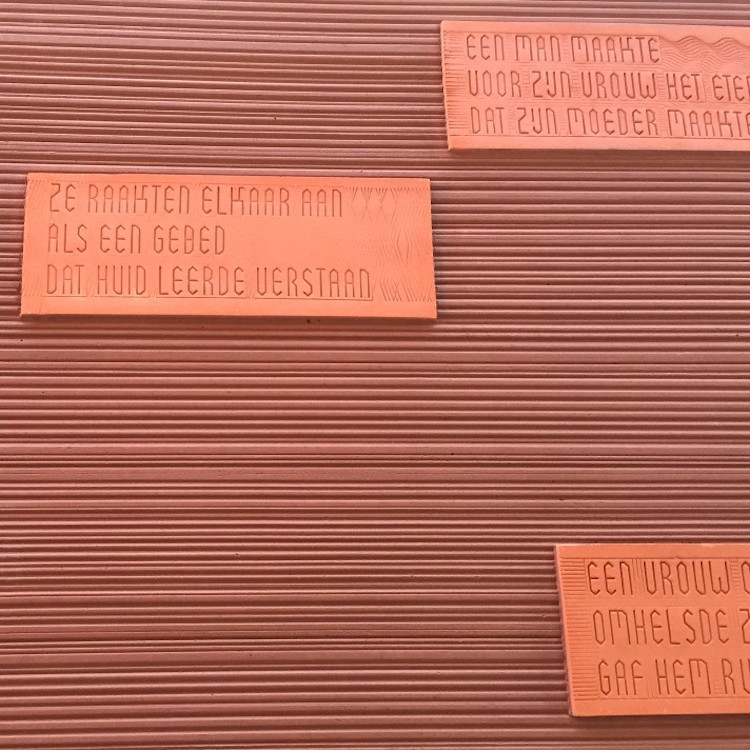UTRECHT, The Netherlands — A new residential building, De Verkenner, was built in Kanaleneiland by Mei Architects and it uses tile, brick and poetry to create a unique and homey living space for its residents.
For this brick-as-cladding facade, the architecture firm worked with famed ceramics company Royal Tichelaar Makkum, visual artist Milou van Ham and poet Tsead Bruinja. The poem is a fascinating addition; think of it as an artful mission statement, a declaration of intent, text weaving itself into the physical world through the hard, dependable medium of brick. Any writer would jump at the chance to be included in such a work. For those familiar with the bricks, they can serve as a kind of window if one is passing by the building. One has only to look at the tower, recall the words and reflect that something of that nature is likely going on inside. This work creates connections.
Above image: De Verkenner by Mei Architects. Photographs by Jeroen Musch and Ossip van Duivenbode.
De Verkenner – Rozen & Beton from Mei architects and planners on Vimeo.
From the studio:
The design for the facade responds to the concrete gallery-access blocks of flats in Kanaleneiland. In contrast to the horizontal articulation of these facades, the exterior of De Verkenner is predominantly vertical in design. Owing to the high noise levels on Churchilllaan, the facade here is closed in character, but the number of openings increases towards the top. The facade is ‘slow made’ with consciousness regarding local materials and production techniques. The colour harmonizes with the brickwork facades of the new developments on Churchilllaan, but it is constructed of concrete. The brown concrete elements, each two floors tall, feature a surface texture and relief details. This effect is enhanced by the incorporation of 13,000 ceramic tiles, made by Royal Tichelaar Makkum – the oldest company in the Netherlands and world-famous for its ceramics designs. Based on a design by visual artist Milou van Ham in collaboration with poet Tsead Bruinja, these tiles feature 16 different lines of poetry that lend the building an identity specific to the location.
The 16 lines of poetry form a poetic reflection on friendships and relations. These mini-stories concern ordinary events and real people. They deal with living together in a house, a building, a neighbourhood or a city in the past, present and future.
The ceramic tiles are inserted into the facade elements randomly. As a result, the way you read the lines and connect them to one another is different to a poem where the sequence is fixed. In passing, you can read the lines in isolation, separately from the other tiles. Together they form a varied and exciting composition.
Do you love or loathe this work of contemporary brick architecture? Let us know in the comments.










Add your valued opinion to this post.